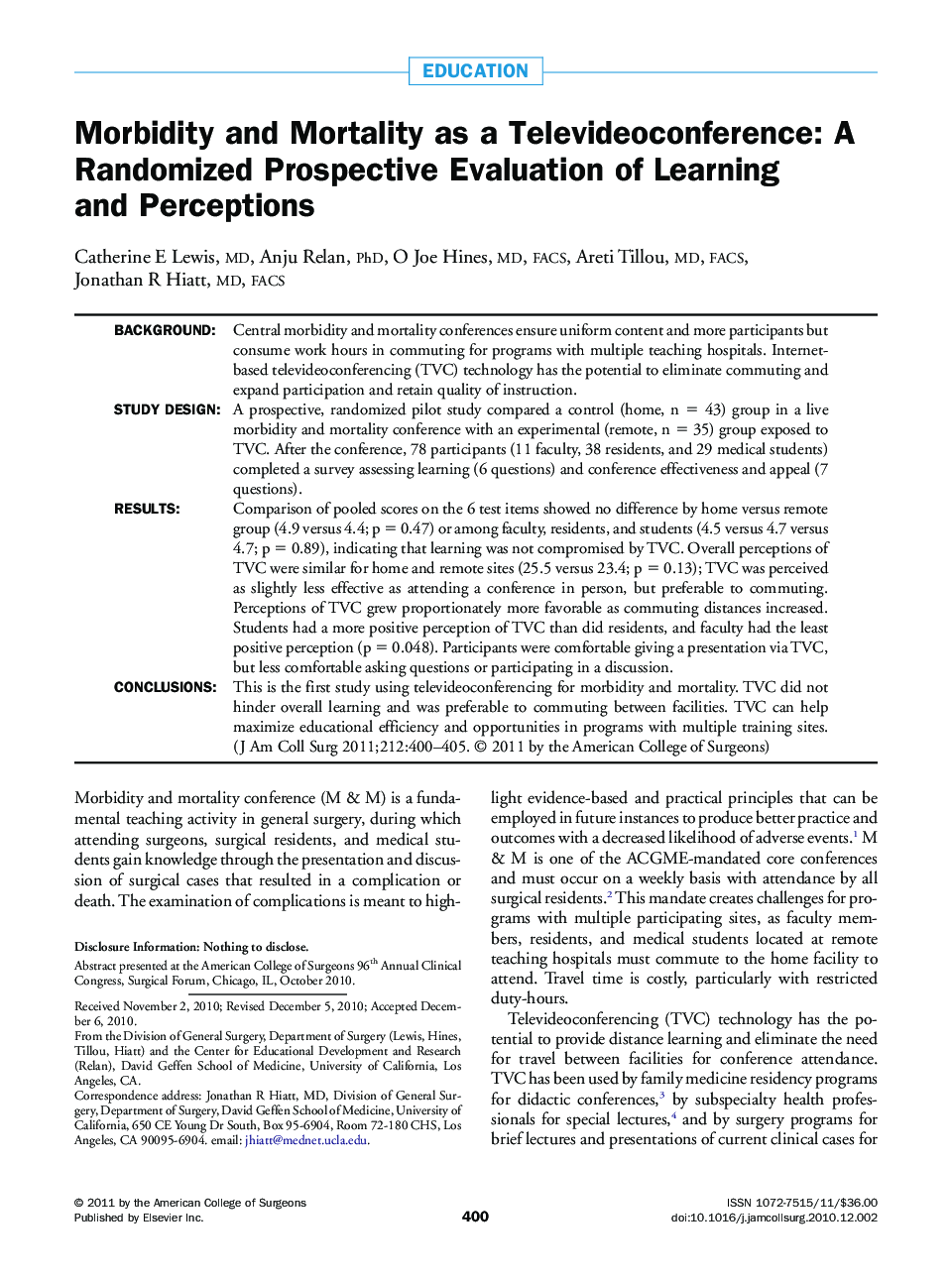| Article ID | Journal | Published Year | Pages | File Type |
|---|---|---|---|---|
| 4292340 | Journal of the American College of Surgeons | 2011 | 6 Pages |
BackgroundCentral morbidity and mortality conferences ensure uniform content and more participants but consume work hours in commuting for programs with multiple teaching hospitals. Internet-based televideoconferencing (TVC) technology has the potential to eliminate commuting and expand participation and retain quality of instruction.Study DesignA prospective, randomized pilot study compared a control (home, n = 43) group in a live morbidity and mortality conference with an experimental (remote, n = 35) group exposed to TVC. After the conference, 78 participants (11 faculty, 38 residents, and 29 medical students) completed a survey assessing learning (6 questions) and conference effectiveness and appeal (7 questions).ResultsComparison of pooled scores on the 6 test items showed no difference by home versus remote group (4.9 versus 4.4; p = 0.47) or among faculty, residents, and students (4.5 versus 4.7 versus 4.7; p = 0.89), indicating that learning was not compromised by TVC. Overall perceptions of TVC were similar for home and remote sites (25.5 versus 23.4; p = 0.13); TVC was perceived as slightly less effective as attending a conference in person, but preferable to commuting. Perceptions of TVC grew proportionately more favorable as commuting distances increased. Students had a more positive perception of TVC than did residents, and faculty had the least positive perception (p = 0.048). Participants were comfortable giving a presentation via TVC, but less comfortable asking questions or participating in a discussion.ConclusionsThis is the first study using televideoconferencing for morbidity and mortality. TVC did not hinder overall learning and was preferable to commuting between facilities. TVC can help maximize educational efficiency and opportunities in programs with multiple training sites.
